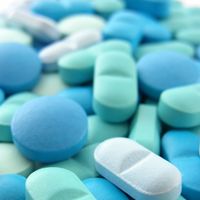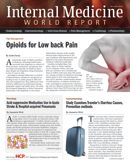Publication
Article
Internal Medicine World Report
New Anticoagulants vs. Warfarin: Risks and Benefits
Author(s):
Avoiding intracranial hemorrhage (ICH) is a major concern for physicians treating patients with anticoagulation drugs. Iatrogenic ICH related to anticoagulants occurs in 0.3% to 1.8% of patients a year who are taking warfarin.

Avoiding intracranial hemorrhage (ICH) is a major concern for physicians treating patients with anticoagulation drugs. Iatrogenic ICH related to anticoagulants occurs in 0.3% to 1.8% of patients a year who are taking warfarin.
A JAMA Neurology analysis weighed the findings of a study that showed 3 novel oral anticoagulants (NOAC)s dabigatran, apixaban, and rivaroxaban greatly reduced this risk in patients with atrial fibrillation (AF).
In that study, Saurav Chatterjee, MD and colleagues reviewed existing studies and data from several databases, supplemented with conference abstracts through Dec. 1, 2012 to find evidence of the effectiveness of these NOACs.
Six studies of more than 57,000 such patients were analyzed.
The team found that each of the 3 NOACs reduced the risk of ICH compared with aspirin or warfarin. They saw no evidence of one NOAC drug being any better than another.
Evaluating the study in a clinical review in JAMA, Paul Vespa, MD said “It is tempting to apply these results by transitioning patients from warfarin to an NOAC or using an NOAC instead of warfarin for patients initiating anticoagulation therapy,” because the data imply NOACs are safer.
But the “lingering concerns” are many, Vespa wrote.
There is uncertainty about the optimum NOAC dose, no proven antidote for life-threatening bleeds, and little information about the use of thrombolysis for patients taking an NOAC. Also lacking is “reasonable monitoring tests to determine the efficacy of the NOAC,” Vespa shared.
For those reasons, these concerns “likely slow the acceptance to use these newer agents,” he said.
There are suggested remedies for life-threatening bleeding in patients taking NOACs, such as use of activated charcoal within 2 hours of ingestion, activated prothrombin concentrate, factor VII, and fresh frozen plasma.
In the case of dabigatran, plasmapheresis may work, but all these suggestions were based on anecdotal evidence, he said.
Of the 3 NOACs, Vespa believes rivaroxaban has an advantage in that there is a known effective treatment in the event of a bleed—at least based on animal studies. That remedy is prothrombin complex concentrate at 100IU/kg, which limited ICH expansion in the test animals.
Rescue agents for ICH in NOAC patients are still being researched and some are in development.
“The NOACs hold great promise, but a reliable antidote is needed to facilitate widespread adoption of these agents,” Vespa concluded.






